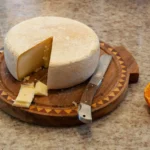Antarvwsna is more than just a concept; it embodies a rich tapestry of traditions woven through time. It’s a fascinating journey that bridges the gap between ancient customs and contemporary practices. As we delve into this intricate world, we’ll explore its origins, how it’s evolved over the years, and what it means in today’s fast-paced society. Whether you’re new to Antarvwsna or have been following its evolution closely, prepare for an insightful exploration that highlights both its significance and challenges in modern life. Let’s embark on this engaging journey together!
The Origin and Evolution of Antarvwsna
Antarvwsna has deep roots that are intertwined with cultural traditions. It originated as a form of expression, embodying the essence of community and shared values.
Historically, Antarvwsna was practiced in sacred spaces where rituals took center stage. Participants sought to connect not just with each other but also with the spiritual realms.
As society evolved, so did Antarvwsna. The once-solemn gatherings transformed into vibrant celebrations. Modern influences began shaping its practices, infusing contemporary elements while retaining core principles.
Today, it resonates differently across various demographics. Younger generations embrace technology and social media for broader outreach and engagement.
This evolution reflects a dynamic interplay between preserving tradition and embracing change. As time unfolds, Antarvwsna continues adapting while honoring its rich heritage.
The Impact of Technology on Antarvwsna
Technology has profoundly reshaped the practice of Antarvwsna. Traditional methods, once rooted in manual processes, are now enhanced by digital tools and platforms.
Innovative applications enable practitioners to connect with a wider audience. Virtual ceremonies have emerged, making it possible for participants from around the globe to engage without geographical barriers.
Moreover, social media plays a pivotal role in promoting Antarvwsna events and rituals. Online communities foster discussions that were previously limited to local gatherings.
Mobile apps provide resources such as schedules, tutorials, and even live streams of important practices. This accessibility bridges gaps between generations.
Yet technology’s influence is not universally embraced. Some argue it dilutes authentic experiences or alters traditional meanings over time. Balancing innovation with heritage continues to be a topic of lively debate among enthusiasts and critics alike.
Controversies Surrounding Antarvwsna
Antarvwsna has ignited debates that reveal deep societal rifts. Critics often voice concerns about cultural authenticity, arguing that modern adaptations dilute traditional values.
Some believe the evolution of Antarvwsna strips away essential elements, transforming a rich heritage into mere entertainment. This tension highlights a struggle between preserving history and embracing change.
On the flip side, proponents argue that adaptation is necessary for survival. They see modernization as a way to keep Antarvwsna relevant in an ever-changing world.
Yet this clash raises questions: How do we honor tradition while also evolving? The discussions around Antarvwsna are not just about art; they reflect broader conversations on identity and progress within communities everywhere.
As different voices contribute to the narrative, it becomes clear that Antarvwsna’s journey will continue to provoke strong feelings from all sides.
The Role of Antarvwsna in Modern Society
Antarvwsna has carved a niche in contemporary culture, acting as a bridge between the past and present. Its essence lies in fostering connections that resonate with both tradition and modernity.
In today’s fast-paced world, Antarvwsna serves as a reminder of our roots while encouraging innovation. Individuals are embracing these age-old practices to find balance amidst technological chaos.
Communities adopt Antarvwsna not only for its cultural significance but also for its role in promoting mental well-being. Engaging with this practice helps foster mindfulness and community cohesion, allowing people to reconnect on deeper levels.
Additionally, artists and creators are infusing Antarvwsna into their work, making it relevant for younger generations. Through music, art, and literature, they reinterpret traditional themes that speak to modern experiences.
The adaptability of Antarvwsna reveals its importance as society evolves. It continues to inspire dialogue about identity and heritage in an increasingly globalized world.
Criticisms and Support for Antarvwsna
Antarvwsna has sparked diverse opinions, both in support and criticism. Advocates argue that it preserves cultural heritage while allowing for adaptation to modern life. They see it as a bridge between generations, fostering understanding and collaboration.
On the other hand, critics voice concerns about its authenticity. Some believe that modernization dilutes traditional practices, leading to a loss of identity. They fear that commercialization could overshadow genuine cultural expressions.
Additionally, there are debates surrounding inclusivity within Antarvwsna practices. Many urge for more representation from marginalized voices within communities.
Yet supporters counter this by emphasizing the fluid nature of culture itself—arguing that change is an essential part of survival in contemporary society. This ongoing dialogue captures the dynamic essence of and highlights its significance amid shifting landscapes.
Conclusion: The Future of Antarvwsna
As we look ahead, the future of Antarvwsna appears to be a blend of tradition and modernity. The essence of this practice is deeply rooted in cultural significance while adapting to contemporary societal shifts. With technology continuously influencing our lives, it’s likely that will harness these tools for innovation.
The dialogue surrounding its relevance persists, with both supporters and critics weighing in on its place in society. This discourse not only fuels interest but also encourages further exploration into how traditional practices can coexist within modern frameworks.
Antarvwsna stands at a crossroads—where age-old customs meet dynamic changes in lifestyle and values. Its evolution will undoubtedly reflect broader societal trends as people seek connections to their heritage while navigating an ever-changing world.
Embracing this journey could pave the way for new interpretations and practices that resonate with future generations. As discussions around identity, culture, and technology continue to unfold, may emerge as a symbol of resilience—a testament to the ability of traditions to adapt without losing their core essence.






